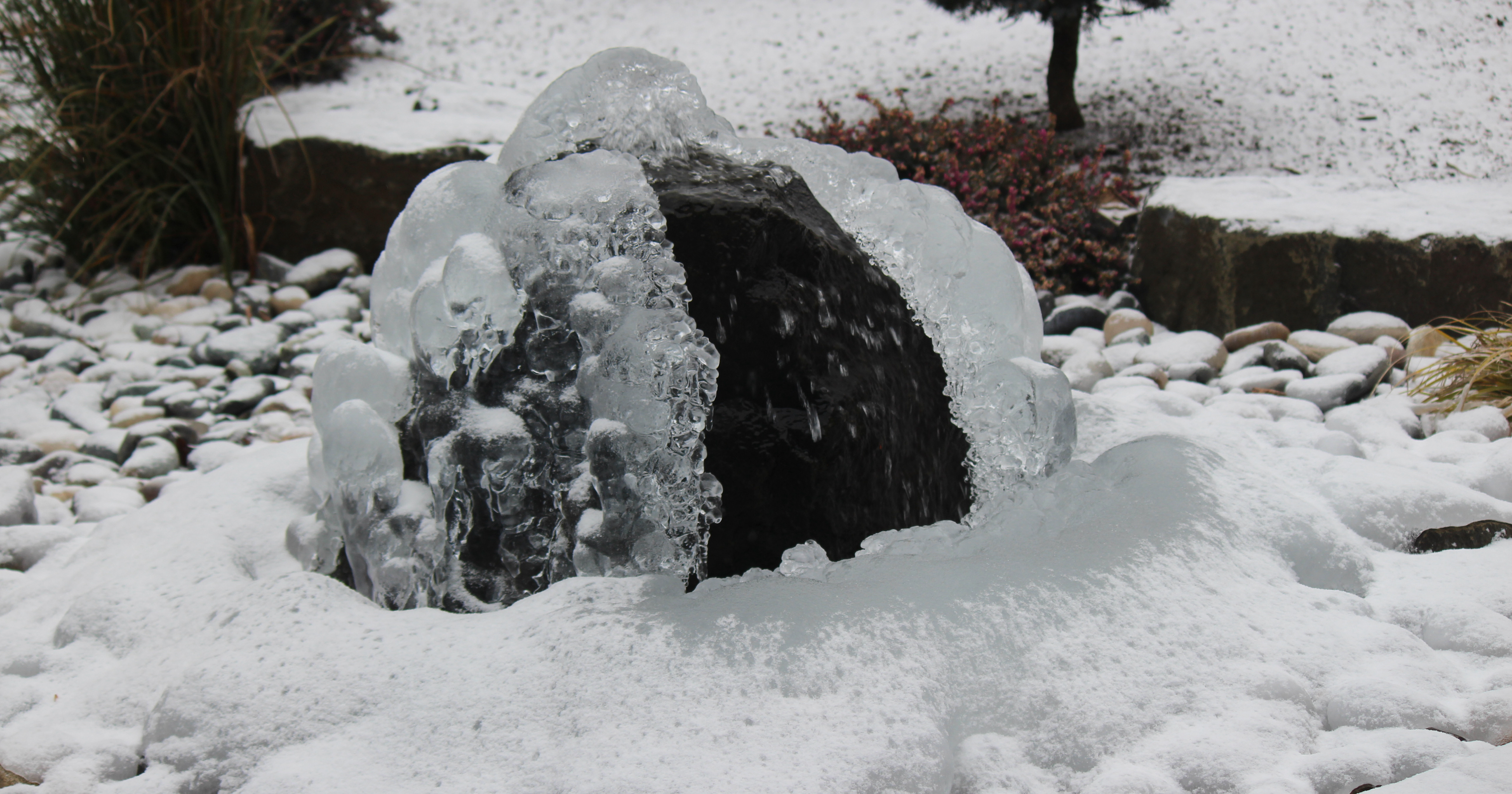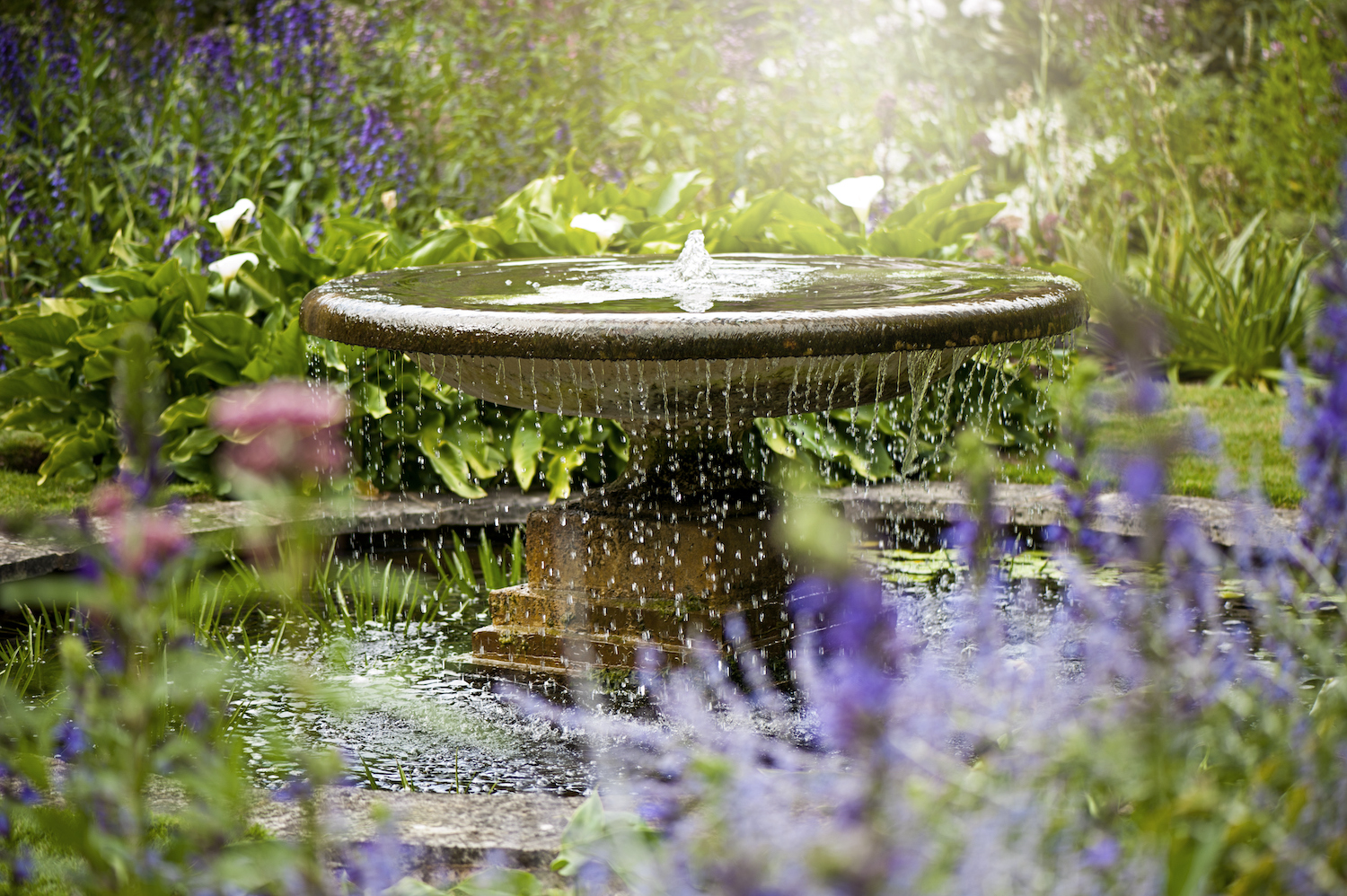
If you've been pondering 'should I winterize my water feature?' the answer will obviously depend on how cold it gets where you live.
The sound and sight of trickling water is soothing but if your fountain freezes it could become a source of stress.
Those who live in areas where freezing weather is likely–or even possible–should definitely winterize a water feature to prevent damage to pipes and bowls from ice and snow.
Fountain owners in warmer parts of the country, where it never freezes, can relax and enjoy their backyard's water feature throughout the seasons.
That said, it's far easier to dismantle or maintain an outdoor fountain than replace one, so err on the side of caution if you're unsure of forthcoming weather conditions.
Why you should winterize a fountain

'As lovely as they are, winter is not the time to run a water feature,' says Alice Bowe at Sunnydaze Decor. 'During winter, water inside a fountain can freeze and expand as temperatures fluctuate. This can weaken and crack the material of your fountain and damage the pump.
'Ideally, you should stop running your outdoor fountain in late autumn before the temperatures drop below freezing.'
How to winterize a fountain

Deciding on the best way to winterize and protect an outdoor fountain or water feature will depend on its size.
'With a small outdoor fountain, the best option is to drain it and store it in a dry place like your garage or shed,' says Alice. 'If your water feature is too large to move, drain it and wrap it with a fountain cover or tarpaulin to keep out any snow or moisture.
'If your fountain is to remain outside due to its size, remove the pump and store it indoors, before covering the water feature.
'Before storing it, clean the pump with a soft cloth, mild dish soap and running water through the tubing. This will help it run more smoothly when you set your fountain up again in the spring,' adds Alice.
How to drain a water feature
Whether you're storing it or leaving your fountain outside, the first step in winterizing a water feature is to unplug it and drain it of water.
'You can drain a fountain either with a scoop or bucket to bail the water out, or use a shop vac to suck the water out of the bowls,' says Alice.
'Remove dirt or algae with mild dish soap, hot water and a soft bristled brush. White calcium or lime scale build-up can be scrubbed away with a mixture of water and distilled white vinegar or baking soda.
'Although, don't use vinegar or store-bought cleaners on a copper fountain, as it can damage the patina.'
It's generally best to test any cleaning products that you use on a small inconspicuous area before using them to clean the rest of the fountain.
Disassemble your fountain or water feature as much as possible and ensure it is thoroughly clean and dry before storing or covering it. 'It's worth lining the basin or bowls of an outdoor fountain with towels or burlap sacks before covering it, as they will absorb any moisture that seeps past the cover,' adds Alice.
What not to do
Do not be tempted under any circumstances to put anti-freeze in the water. It's a toxic substance that can detrimentally affect your fountain and poison the water, and any birds that drink from it.
'Anti-freeze can have serious negative consequences–it can damage the fountain pump and endanger pets, children and wildlife,' cautions Alice. 'Draining the fountain and winterizing it is a better solution.'







